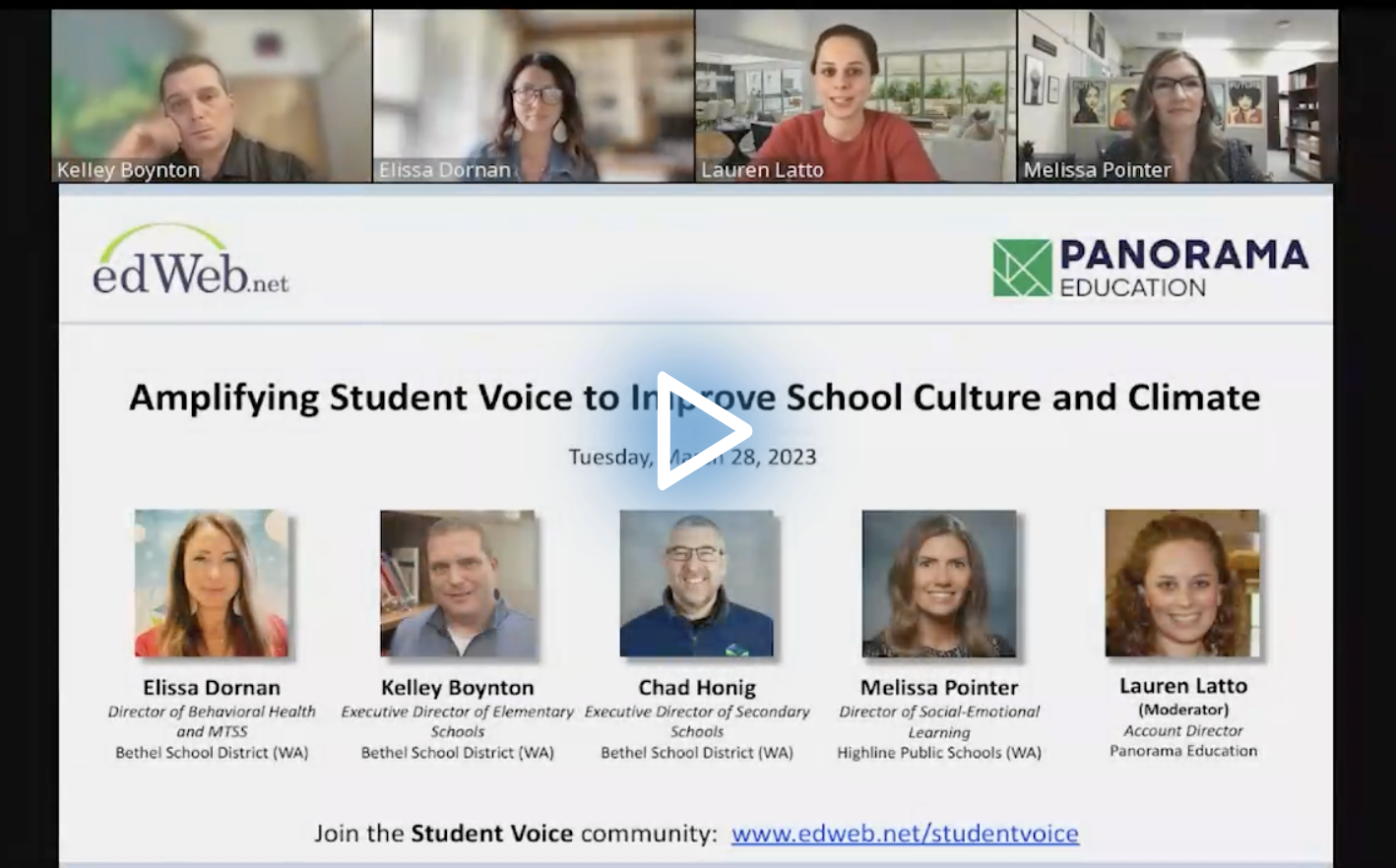Making Space for Student Voice on the Front Burner
Watch the Recording Listen to the Podcast
If students play an important role in fostering a positive school culture, then student voices should be at the forefront of conversations about school climate. That was the main message from the edLeader panel, “Amplifying Student Voice to Improve School Culture and Climate.” More important, the panelists shared how they integrate the students and their needs during every step of the process to make sure their voices aren’t lost.
Gather Info From the Students
First, schools have the common goal of making students feel safe, supported, and connected. So when they want to find out if they are meeting that goal, they often survey the students first.
In addition to surveys, though, the panelists advocated for convening focus groups to discuss student views in depth. This allows leaders to identify the true problem areas by gathering actionable data rather than trying to make inferences from observations.
The panelists also noted that students of all ages can participate in the information-gathering process—they found that elementary-age kids can articulate their needs as well as high schoolers can.
Involve Students in the Planning Process
Second, whether developing an overall strategic plan or just focusing on districtwide SEL needs, the students should be part of the team. For example, at Highline Public Schools (WA), they developed SEL student advisory groups to help them interpret the data and plan the next steps. The challenge was to partner with students beyond just asking them questions and to make them part of solution development.
Similarly, in Bethel School District (WA), secondary schools have student panels, and some were invited to be part of school leadership teams. They’ve even helped advise leadership on educator professional development.
Engage Students in Evaluating Progress
Finally, as schools track the progress of their school climate initiatives, leaders should ask students what is and isn’t working. At Highline, for instance, the leadership team developed a series of indicators that would show if students felt like they belonged in the classroom or not. While the teachers and staff weighed in on the indicators and the scores, the students were also asked to give their opinions.
Of course, soliciting the students’ voices wouldn’t work if the school doesn’t have a reliable and consistent method for gathering and reporting on the data. The data should offer leadership several levels of views from schoolwide and districtwide needs to targeted student populations.
Staff also need training on how to use the data so that they are identifying lagging skills rather than labeling students as deficient. Then, they can identify kids who could use interventions for specific skills.
Learn more about this edWeb broadcast, “Amplifying Student Voice to Improve School Culture and Climate,” sponsored by Panorama Education.
Watch the Recording Listen to the Podcast
Join the Community
Student Voice is a free professional learning community that helps you take student voice to a new level, and build student aspirations and ignite academic motivation.

Blog post by Stacey Pusey, based on this edLeader Panel.





Comments are closed.